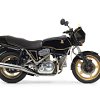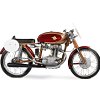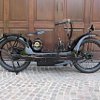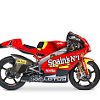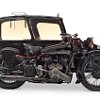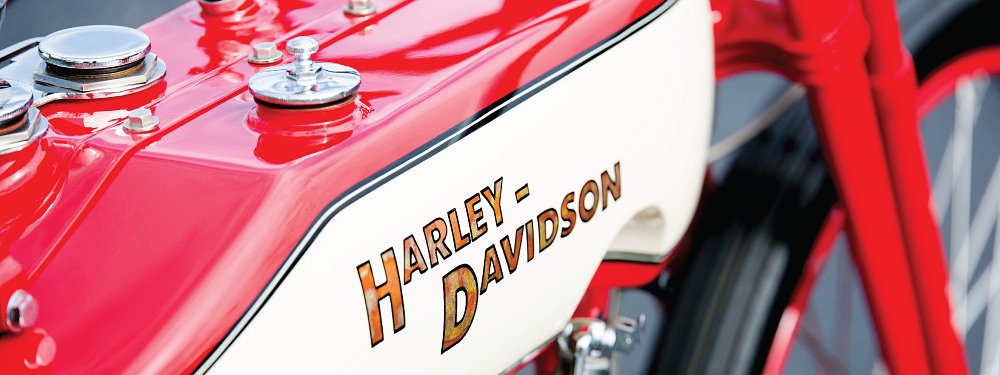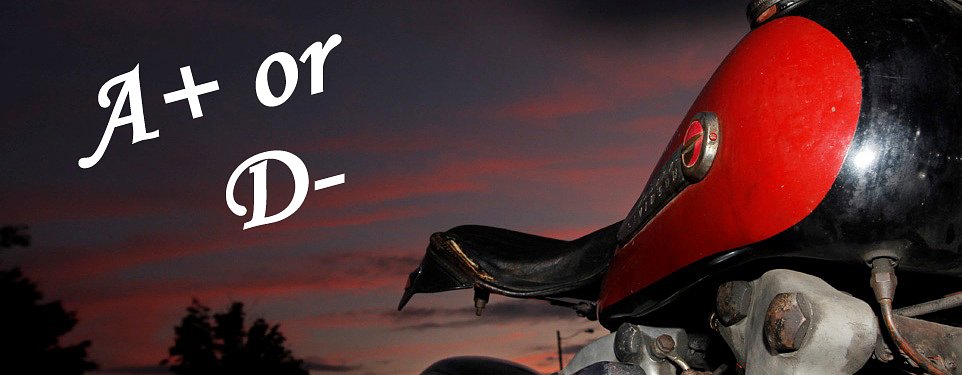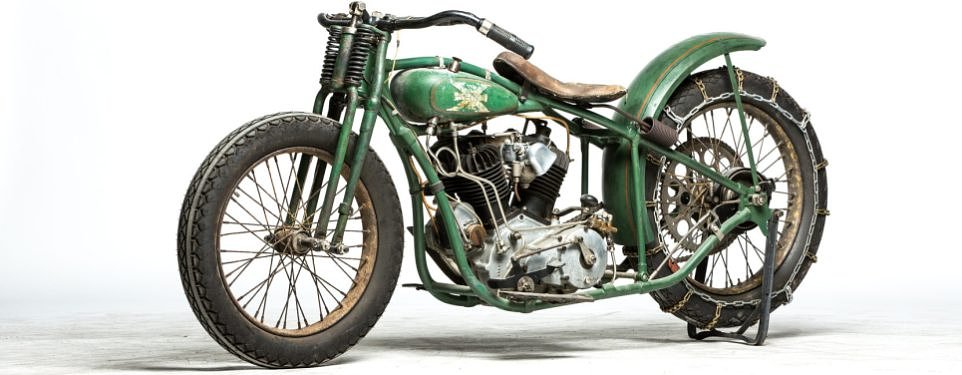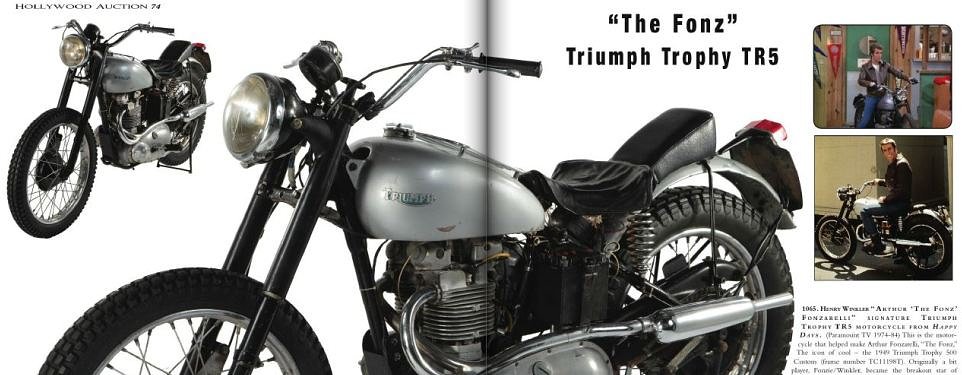This Sunday, the Bonhams auction house in England holds its Autumn Stafford Auction, an exclusive, one-day event selling elite motorcycles and motorcycle memorabilia.
Bonhams routinely sees some of the world’s finest examples on two wheels and more than 300 lots are up for bid (and bidding is available online). Here are five of my favorite scoots being offered up this Sunday.

1982 Hesketh V1000
Estimated worth: $11,000 to $16,000
Hesketh Motorcycles was Lord Thomas Alexander Fermor-Hesketh’s attempt to revive the largely stagnant late-1970s British motorcycle manufacturing industry. The Lord and Baron already owned a Formula 1 team, in addition to a myriad of other prestigious ventures, so when it came time to design Hesketh’s first bike — the V1000, sort of like a more modern Vincent — top-shelf components were selected. Brembo brakes, Astralite rims, and a nickel-plated Reynolds 531 frame were all standard on the V1K.
The model was powered by a Weslake 992 cc V-twin that was supposedly the UK’s first machine with DOHC and four valves per cylinder. It made 82 horsepower and 78 foot-pounds of torque and the V1000 weighed in at 540 pounds. Gearboxes on the first V1000 machines were a marked weak point, though this problem would later be fixed. Fewer than 200 units were produced before the company pulled the plug (for the first time at least) in 1982.
Despite its overall lack of initial success, the V1000 is one of the most sought-after British machines of all time. V1Ks are extremely rare, museum-quality examples like this one (previously owned by the National Motorcycle Museum), even more so.

1959 Ducati 175 cc Formula 3 racer
Estimated worth: $66,000 to $92,000
Ducati’s racing heritage stretches far back in its long and rich 91-year history. After the introduction of the 100 Gran Sport — Fabio Taglioni’s first bike at Ducati and Ducati’s first overhead-camshaft single — the Bologna-based brand introduced a number of racers and production models that were all direct descendants of the Gran Sport, including the 125 that would utilize Taglioni’s signature springless Desmodromic valve-actuation system. The late 1950s Formula 3 bikes were early variants of this technology and were built in 125 cc and 175 cc (and later 250 cc) displacements for production-based racing.
The race machines looked very similar to the production models but differed in a handful of important ways. The competition machines sported sand-cast crankcases, different engine internals, upgraded brakes, a four-speed gearbox, and camshaft bevels and primary drive with straight-cut gears. The race versions also had frames that boasted a lowered steering head, shorter forks, and a shorter swingarm. Ducati reported its lighter and lower race-spec 175 cc Formula 3 machine making 16 horsepower. Formula 3 Ducatis saw a lot of success on the track and helped carve out Taglioni’s place in history. Each bike was built by hand and it’s estimated that fewer than 100 units were ever produced, making this a wildly desirable and collectable Ducati.

1932 Ner-A-Car
Estimated worth: $17,000 to $21,000
The Ner-A-Car is one of the many two-wheeled oddities that have been created over the course of moto-history. Like an antique version of Bimota’s Tesi or Yamaha’s GTS, the Ner-A-Car is a hub-center-steered motorcycle. The unorthodox front end enabled the Ner-A-Car’s design to feature a low-positioned frame and powerplant, resulting in very low center of gravity.
Initial production took place in the United States, with 10,000 units being made. Later, roughly 6,500 more units were built in the UK by Sheffield-Simplex, using their own engine instead of the original U.S.-made 221 cc engine in the original Ner-A-Car. Both shared the same hub-center steering, pressed-steel frame, huge front mudguard, and friction-drive transmission. This particular example was manufactured in the United States but ended up in Italy, where it underwent a ground-up restoration, bringing it back to its former roaring 1920s glory.

Jorge Lorenzo’s 2007 World Championship RSW 250
Estimated worth: $130,000 to $180,000
Jorge Lorenzo has earned a place among the world’s best motorcycle racers with five world championships, three of them in the premier class. His other two titles were earned in 2006 and 2007 in the 250 class and this Aprilia RSW 250 is a motorcycle he rode in 2007.
Though this bike is a decade old, it’s still a fairly cutting-edge machine that embodies what many racers loved about two-strokes. Not only is this RSW 250 a breathtaking motorcycle, but it’s also an important and unique piece of history. (Interesting note: Andrea Dovizioso, Lorenzo’s current teammate, was the 2007 runner-up.) It is a rare championship-winning race machine from one of the last years before the 250 class gave way to Moto2. Plus, it’s a gorgeous motorcycle and the livery is pretty easy on the eyes.

Matchless-Powered 1938 Brough Superior SS80 with Blacknell sidecar
Estimated worth: $66,000 to $79,000
Designed by George Brough himself, the Brough Superior SS80 is hands down one of the most prestigious motorcycle models of all time. It saw production from 1924 to 1939, and underwent a series of changes before World War II put an end to production.
One of the SS80 variants produced was the Matchless-powered GWL 4, fewer than 500 of which were built. Although there is a pristine 1932 Brough Superior SS80 De Luxe being auctioned this Sunday, I was much more drawn to this SS80, complete with WWII-era luxury sidecar. Jack Billard, the original owner of this SS80, purchased it new in Oxford in 1938. Billard made parts for the legendary Spitfire fighter during the war, but would go on to work for marques like Rolls-Royce and Bentley after becoming a specialist as a “panel beater.” After the war, Billard got married and had a daughter. To accommodate his growing family, he fixed a sidecar to his SS80, but after having a second daughter, more space was needed. Enter an original Blacknell sidecar, a unit Billard purchased new from TC Munday & Co in Brixton. The luxurious sidecar rig boasted a plush interior and became the Billards' primary means of transportation, capable of shuttling the entire family of four.
After Jack’s death, the combo was sold by his family at a 2006 Bonhams auction to its current owner. This is a legendary motorcycle with some supplementary character that sets it apart from the rest of the few elite and seldom-seen SS80s that remain in existence.





